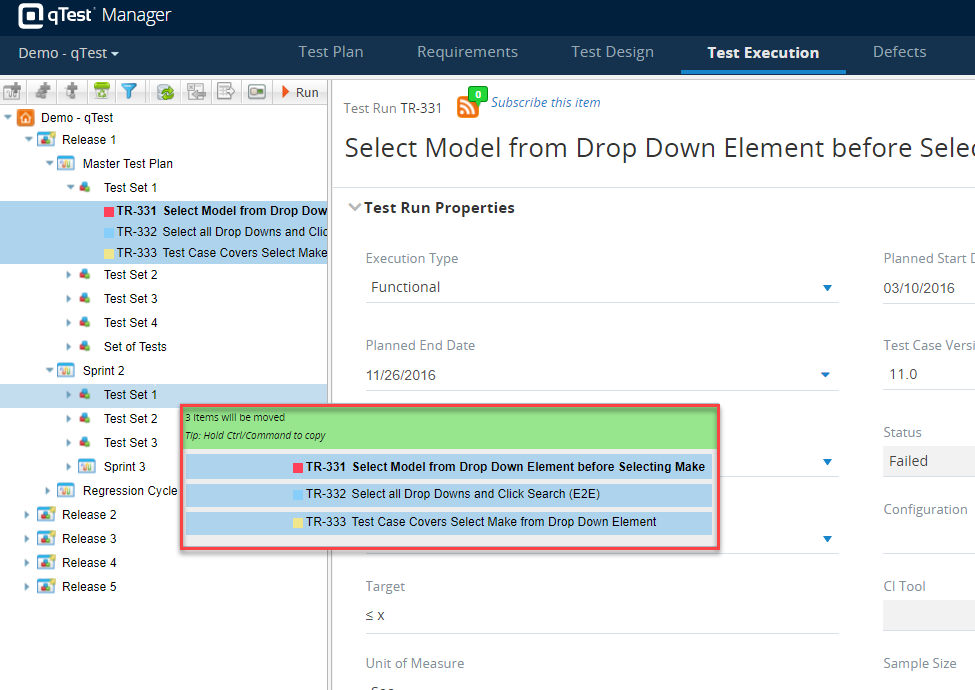Copy and Move Objects in Test Execution
qTest Manager makes it easy to both copy and move objects within your testing environment. In Test Execution, users can move Test Cycles, Test Suites, and Test Runs.
For a more detailed introduction to the nature of qTest objects, refer to Introduction to qTest Objects.
Copy and Move Test Cycles
Users can quickly copy and/or move Test Cycles using either the Context Menu or Drag and Drop features.
Copy and Move using the Context Menu
To use the Context Menu, follow these steps:
-
In Test Execution, select one or more Test Cycles in the Navigation Panel.
-
Right-click and select Copy/Cut to duplicate/move a Test Cycle.
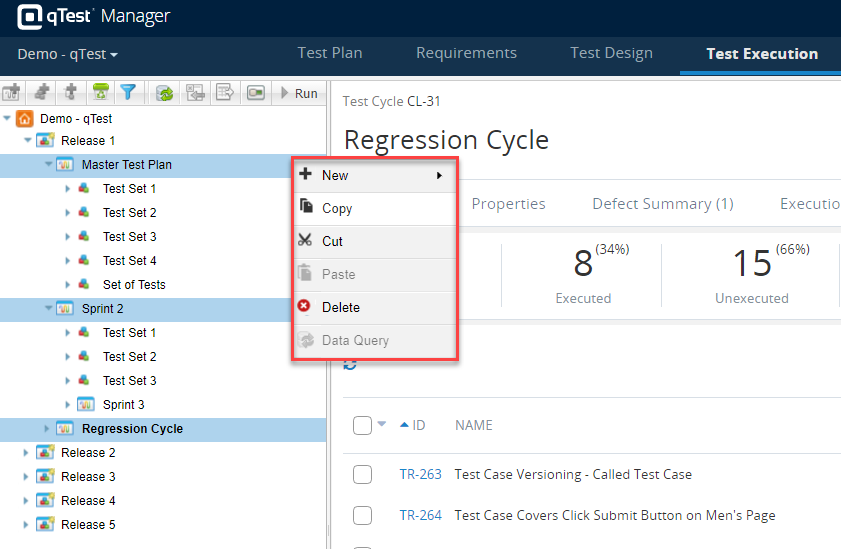 Selecting Copy will copy the Test Cycles and selecting Cut will move it. If you Copy, the Test Cycles will exist in two locations, the original and the new. If you Move a Test Cycle, it will only exist in the new location.
Selecting Copy will copy the Test Cycles and selecting Cut will move it. If you Copy, the Test Cycles will exist in two locations, the original and the new. If you Move a Test Cycle, it will only exist in the new location. -
Right-click on the Root or a target Release and select the Paste option. The selected Test Cycles are copied/moved to the Root or target Release.
Copy and Move Test Cycles Using the Drag and Function
-
In Test Design, select one or more Test Cycles in the Navigation Panel.
-
Hold Ctrl and select your Test Cycles.
-
Drag and Drop the Test Cycles into your Root or target Release.
To Copy, hold CTRL while dragging and dropping. To Move, simply drag and drop without holding CTRL.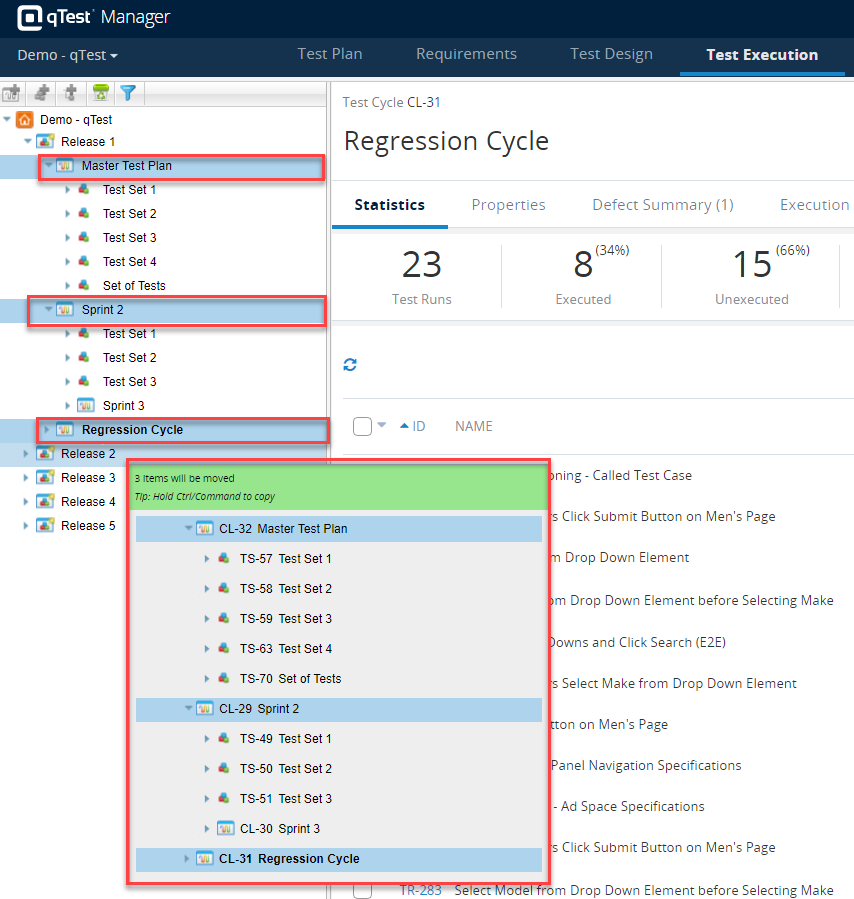
Notes:
-
You cannot copy or move a Closed Test Cycle.
-
All nested objects (i.e., Test Suites and Test Runs) under the copied/moved Test Cycle are copied/moved as well.
-
The target Release of copied/moved Test Cycles and objects under Test Cycles (i.e., Test Suites and Test Runs) will be changed accordingly.
Copy and Move Test Suites
Users can quickly copy and/or move Test Suites using either the Context Menu or Drag and Drop features.
Copy and Move using the Context Menu
To use the Context Menu, follow these steps:
-
In Test Execution, select one or more Test Suites in the Navigation Panel.
-
Right-click and select Copy/Cut to duplicate/move Test Suites.
- Right-click on the Root or a target Release and select the Paste option. The selected Test Suites are copied/moved to the Root or target Release.
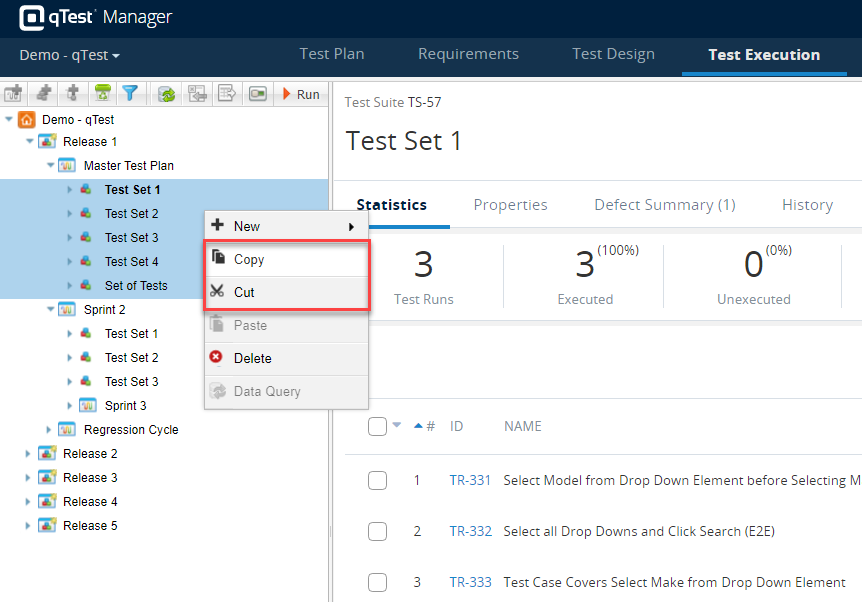
Copy and Move Test Suites Using the Drag and Function
-
In Test Design, select one or more Test Suites in the Navigation Panel.
-
Hold Ctrl and select your Test Suites.
-
Drag and Drop the Test Suites into your target Root, Release, or Test Cycle.
-
Important: To Copy, hold CTRL while dragging and dropping. To Move, simply drag and drop without holding CTRL.

Notes:
-
All Test Runs under the copied/moved Test Suites are copied/moved as well and retain the same version at the time of the copy.
-
The target Release of copied/moved Test Suites and their Test Runs are changed accordingly.
Copy and Move Test Runs
Users can quickly copy and/or move Test Runs using either the Context Menu or Drag and Drop features.
Copy and Move using the Context Menu
To use the Context Menu, follow these steps:
-
In Test Execution, select one or more Test Runs in the Navigation Panel.
-
Right-click and select Copy/Cut to duplicate/move a Test Run.
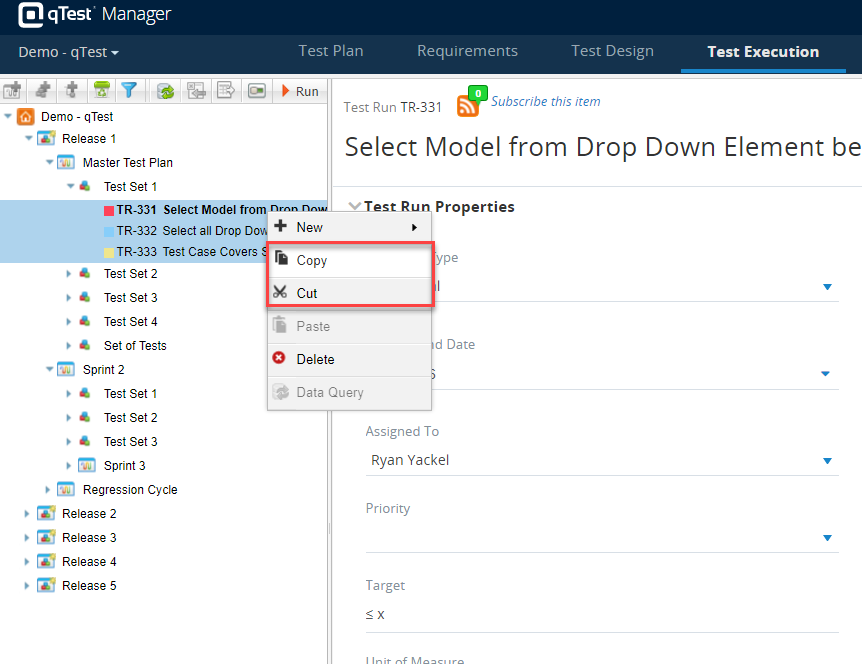
Copy and Move Test Suites Using the Drag and Function
-
In Test Design, select one or more Test Runs in the Navigation Panel.
-
Hold Ctrl and select your Test Runs.
-
Drag and Drop the Test Runs into your target Root, Release, Test Cycle, or Test Suite.
-
To Copy, hold CTRL while dragging and dropping. To Move, simply drag and drop without holding CTRL.
